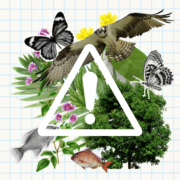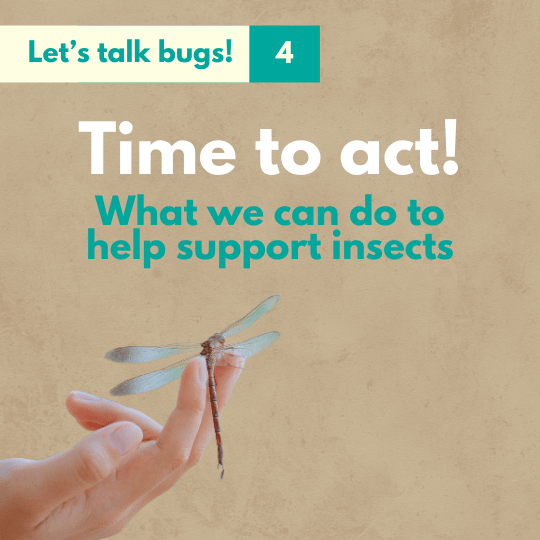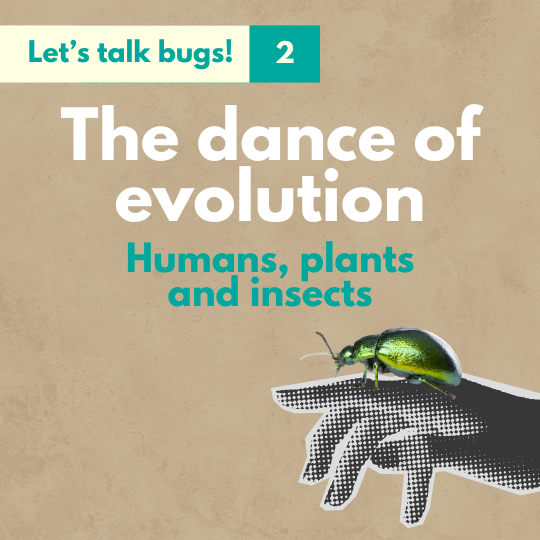The impact of climate change on terrestrial & freshwater ecosystems
A Wake-Up Call from the European Environment Agency’s debut climate risk assessment

Written by

Ashton Melfor
Contents
Share this article
What is the Climate Risk Assessment?
The Climate Risk Assessment (CRA) by the European Environment Agency (EEA) is a course assessment of the current risks posed by climate change for Europe, for different sectors. The report identifies and analyses 36 risks from the policy perspective and synthesises current scientific consensus on the topic.
The historic decline in habitat quality experienced by Europe’s ecosystems seems to be continuing. This negatively impacts many different species as well as people’s livelihoods. Climate change is already a major player behind these ecosystem changes. However, not all ecosystems are impacted in the same way, and some face other challenges that exacerbate the effects of climate change. Here follows a summary of the climate risk assessment for each of the main terrestrial ecosystems in Europe.
Forests
The CRA makes clear that climate change affects both the structure of forests and their functioning. This influence on forest functioning and structure is both through direct interactions with the forest system and through indirect interactions with other species or drivers of change that do play a direct role in forest systems.
Examples of climate drivers acting on forest systems are temperature and moisture. However, habitat fragmentation caused by deforestation is the primary driver behind forest habitat quality degradation.
Furthermore, a lack of sustainable forestry practices like monocultures also made Europe’s forests more susceptible to pressures from climate change.
Some of these challenges are: drought-induced mortality, species range shift, increased incidence of wildfires and pest outbreaks. Fortunately, the forestry sector has adopted measures to create more climate-resilient forests. Nevertheless, it remains to be seen how impactful these measures are, given uncertainties surrounding forests’ responses to climate change.
Peatlands
The leading cause of peatland degradation is human development conflicting with the habitat requirements of peatlands. The effects of climate change are just exacerbating these already existing mechanisms affecting peatland water balance.
For example, climate-induced drought reinforces peatland drying that is already happening due to peatland drainage. Unfortunately 50% of peatlands in the EU are degraded (25% Europe-wide). This puts many species dependent on peatlands like the bog orchid (Hamarbya paludosa) at risk of going extinct. Very alarmingly, future projections predict that peatland will become a net carbon emitter under current rates of change. This limits their ability to help us mitigate climate change effects. Peatlands are currently a large carbon sink.
Freshwater systems
Freshwater systems are affected by different climate drivers compared to the previous ecosystems. But most importantly, temperature and precipitation contribute to the most change. The consequences of increasing temperatures include shifting thermoclines or more pronounced thermal gradients in water bodies.
Temperature-sensitive species are also at risk as water temperatures rise. Decreases in precipitation can potentially cause water bodies to dry up significantly, but increases in precipitation can lead to toxic algal blooms. The fact is that surface waters are already increasing at a rate of 0.21-0.45°C per decade. This rate of change is particularly high in northern climates. Widespread eutrophication is already a concern in many European countries.
Arctic and mountain ecosystems
The main drivers of change in arctic and mountain systems are rising temperatures and human use. Both systems are particularly susceptible to climate change as they experience faster warming than on average. Additionally, both systems have a long history of human use, from mining and reindeer herding in the Arctic to grazing in mountain grasslands. The current situation of these systems is one of contrasting extremes.
Both droughts and high water retention are becoming commonplace in the Arctic. This destabilises ecosystem function and the ecosystems provided. Mountains are getting less snowfall leading to glaciers receding and lower snowmelt feeding into rivers.
Unfortunately, these threats are projected to worsen with climate change, as the Arctic region warms faster than most places. Leading to the extinction of arctic species, disruption of livelihoods and disappearance of arctic and mountainous ecosystems.
Urban ecosystems
Though climate change puts more pressure on stressors affecting urban ecosystems like the heat island effect, drought and pollution, the impacts are less strong as urban species are more resilient and adaptable.
Nonetheless, increased urban stress still puts the system balance at risk. Conditions might become more favourable for invasive or alien species. Pests and diseases might also be favoured in these changing conditions. Many of these effects are already being felt across European cities, though it is highly context-dependent.
Future projections also show that on the one hand drought in some cities will become more extreme and in others, floods are to be expected. The rise in urban heat island effect in the future is particularly concerning for tree and shrub species already living at their temperature optimums.
Agro-ecosystems
Climate change-induced changes are fortunately not major drivers of change in agro-ecosystems. However, changes in agricultural practices are changing this ecosystem in unprecedented ways. What is certain, is that agro-ecosystems are facing many challenges. Many ecosystem services like pollination, pest control and water regulation are under threat and declining due to many different drivers.
One of the major changes in this system is the sharp decline in pollinators, a combination of agricultural intensification, climate change-induced phenological shifts and pesticide use are disrupting the intricate interactions between insects and plants. In the future climate change will surely become a major driver behind biodiversity loss in agroecosystems. Furthermore, climate impacts soil conditions, with more extreme droughts and soil erosion to be expected.
Conclusion
Not surprisingly, climate change is causing significant changes in terrestrial and aquatic ecosystems. Marine and coastal ecosystems are disproportionately affected by these changes and thus require urgent action. Policy-wise, long-term prioritisation and planning are required to facilitate adaptive management. So how do we move forward? Stronger policy at the EU level is required and in addition, states must work together to tackle our shared risks posed by climate change.
More articles about biodiversity
The impact of climate change on terrestrial & freshwater ecosystems
https://yeenet.eu/wp-content/uploads/2024/05/EEA-climate-risk-report-impact-on-biodiveristy.png 540 540 Eva Kloudová https://yeenet.eu/wp-content/uploads/2018/11/logo-yee-728x1030.png Eva Kloudová2024-04-30 10:02:312024-05-03 14:07:55The impact of climate change on terrestrial & freshwater ecosystems
Inside the European Parliament: Country Breakdown of Major Political Groups
Share
Good to know
During the elections, you are going to vote for a national party and usually, they are also going to be part of one of the major European groups with representatives from different countries.
What is the European Parliament
The European Parliament is composed of Members of the European Parliament (MEPs) who are organised into several political groups, each representing a spectrum of ideologies. These groups are not based on nationality but on political affiliation.
Here’s a brief overview of the major political groups:
- EPP – Group of the European People’s Party (Christian Democrats)
- S&D – Group of the Progressive Alliance of Socialists and Democrats
- Renew Europe – Renew Europe Group
- Greens/EFA – Group of the Greens/European Free Alliance
- ID – Identity and Democracy Group
- ECR – European Conservatives and Reformists Group
- The Left – Confederal Group of the European United Left/Nordic Green Left
- NI – Non-Inscrits” (Non-Attached Members)
Overview of the major groups in the European Parliament by country
Check out the national parties in the political groups of the European Parliament!
How to do that?
- Click on the country of your interest
- Click on the a political group
- Discover the national parties*
* If you hover on the name, you can see their website to get more info
Check out the national parties in the political groups of the European Parliament!
How to do that?
- Click on the country of your interest
- Click on the a political group
- Discover the national parties*
* If you hover on the name, you can see their website to get more info
Inside the European Parliament: Country Breakdown of Major Political Groups
https://yeenet.eu/wp-content/uploads/2024/04/EU-Elections9.png 500 500 YEE https://yeenet.eu/wp-content/uploads/2018/11/logo-yee-728x1030.png YEE2024-04-09 12:29:082024-05-15 14:58:16Inside the European Parliament: Country Breakdown of Major Political GroupsOur mission
 YEE aims to unite environmental youth non-profit organisations in Europe in order to enhance international cooperation, increase knowledge about the climate crisis, raise awareness of environmental problems and to strengthen participation of youth in environmental decision-making.
YEE aims to unite environmental youth non-profit organisations in Europe in order to enhance international cooperation, increase knowledge about the climate crisis, raise awareness of environmental problems and to strengthen participation of youth in environmental decision-making.
Information
Get in touch
Vinohradská 2165/48
120 00 Praha 2 – Vinohrady
Czech Republic
E-mail: yee@yeenet.eu
We are supported by
Supported by the Council of Europe through the European Youth Foundation.
Co-funded by the European Union. Views and opinions expressed are however those of the author(s) only and do not necessarily reflect those of the European Union or the European Education and Culture Executive Agency (EACEA). Neither the European Union nor EACEA can be held responsible for them.









